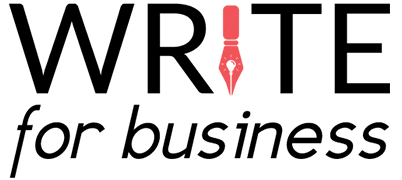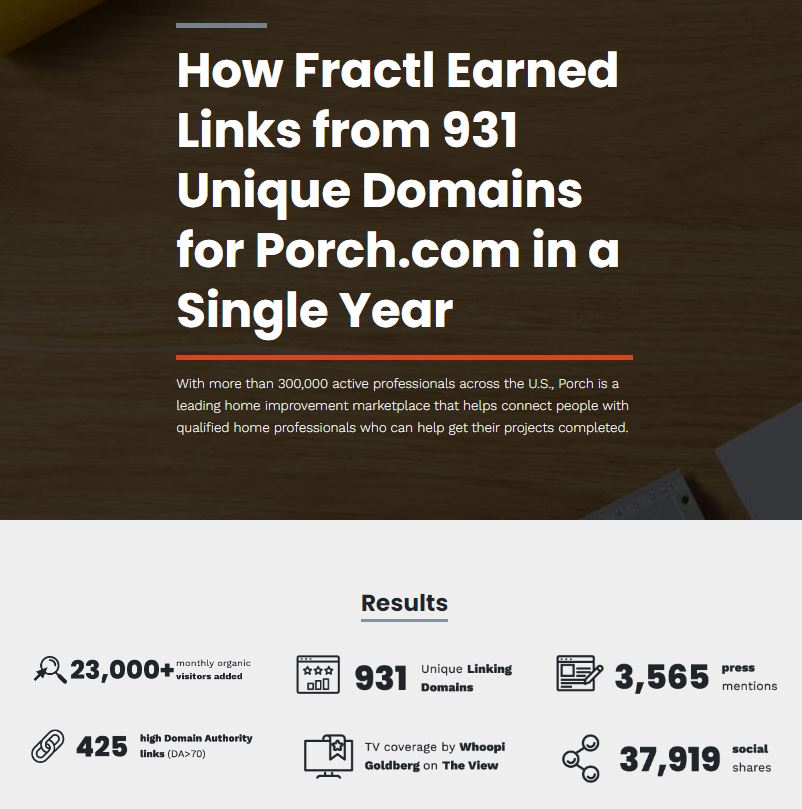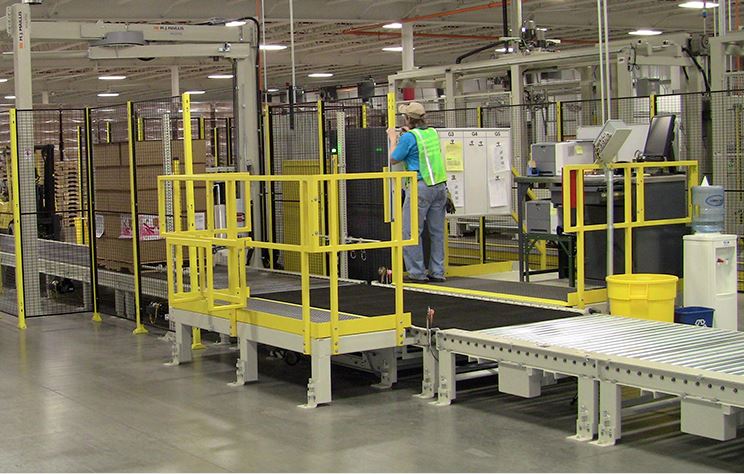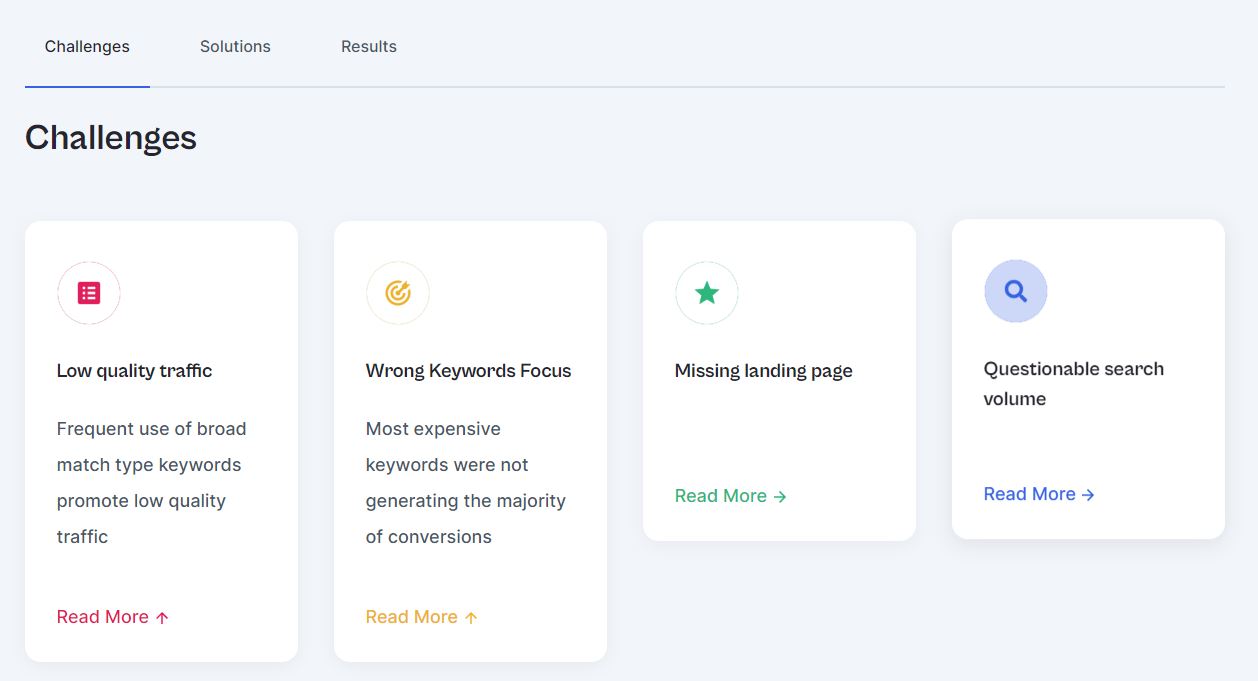B2B Case Studies: What 11 Features Make Them Effective?
By Helen McCrone, SEO Copywriter and Content Writer | 1,660words
A case study is a powerful content marketing tool, especially for businesses that sell to other businesses. These customer success stories provide solid evidence that others have purchased and found value in your product or service. This, in turn, helps to build brand trust and continue the buyer’s journey.
According to a 2021 DemandGen study, 62% of those making B2B purchase decisions said they relied more on practical content like case studies and webinars than other types of information to help them in their decision-making process. Why? Because they consider them to be more trustworthy.
As a copywriter, I make a point of reading all types of case studies so that I can see what works and what doesn’t. Some hit the mark; others fail miserably. Most fall somewhere in the middle, incorporating several but not all best copywriting practices.
So, what is it that turns a second-rate narrative into an effective B2B case study? Here are eleven features that I think every success story should contain, plus a few real-world examples as illustration.

11 features of an effective B2B case study
1. It’s a true story
Too obvious? Maybe not. You can actually write about a product or service using real data in a fictional setting. However, these are not case studies. They’re business use cases, which are a different breed of story. The cardinal rule of every case study is this—every word must be true.
Therefore, don’t make up any data or insert an imaginary quote just to give your story a shot of energy. It will come back to bite you. Your featured customer will complain, or your “facts” will be disproved, and that will damage your brand. Stay honest at all times
2. It has an eye-catching title
A case study can’t be effective if nobody reads it, and the best way to encourage someone to click on it is to give it a compelling headline. That means it uses simple, strong and direct language, and it mentions your solution and/or your customer and/or the showcased result.
The best titles, in my opinion, use the present tense even though they’re describing a past event (e.g., Widget Boosts Local Grocer’s Sales by 10%). This gives the reader a sense of immediacy and freshness. This can be useful for a piece of content that has a relatively long shelf life.
Case study example
Fractl’s case study on helping Porch.com raise its online visibility and increasing its high-authority press mentions gives us a great example of an eye-catching title. Anyone looking to earn more unique backlinks for their company’s website is bound to have their interest piqued.
3. It demonstrates your product in a real setting
A business case study is not a product page, a product brochure or even a testimonial. It is a success story that unfolds in an actual place of business. Real people who work in a real company are the main characters, and they get to tell us how they use (or used) your solution.
This type of content marketing requires some stage setting, so make sure the backdrop to your case study is authentic, recognizable and verifiable, whether it’s an office, factory or field. A real setting solidifies the credibility of your story and makes it a more interesting read.
4. It helps readers understand how your product or service would solve their problem
Why do businesspeople read case studies? Because they’re looking for answers to their questions. They’re hoping that your solution is their solution. And that is why it’s so important to frame your success story as a problem-solving story.
The most effective case studies help readers visualize themselves using your product or service. They help them to imagine overcoming a business problem that is very specific to them. If you manage to do that, you’re one step closer to acquiring a new customer.
Case study example
The case study “Optimized Workforce By More Than 50%” by Bastian Solutions addresses a problem that is probably familiar to many production managers: how to make the company’s manual palletizing process more efficient and less labor-intensive. The systems integrator sets out clearly not only the customer’s business challenges but also the key technologies it used to achieve some impressive results.
5. It uses a tried-and-tested format
Case studies share the "how and why" of your success in a story-telling format. Because many B2B products and services can be complex, it makes sense to break down the story into chronological order. This helps readers to understand the business problem at hand and how your solution solved it.
Most case studies follow a standard 4-part format: the customer, the challenge, the solution and the benefits. It’s a logical structure that takes your target audience step-by-step through the situation. Veer from this traditional approach by all means. Just ensure those key elements are still there.
6. It has a compelling marketing angle
Sometimes I’m asked to write about a success story that has no obvious angle. I then have to sit down with my client and ask them “What is the key takeaway of this story?” In other words, they need to identify the element they want to highlight to meet their marketing goal.
Understand that finding a happy customer and writing about their experiences is not enough to make an effective case study. The success story needs to showcase a key benefit throughout the whole piece, whether it’s comfort and convenience or cost-cutting and productivity.
7. It includes quotes
All the best case studies include quotes—quotes from customers and quotes from the company itself. The reason is simple. They make your content credible. Without a few words from the main characters, you’ll struggle to convince readers that what you’re reporting is true.
If you quote only one person, make it your customer. If you have the space and you want to add a different perspective, quote a colleague as well. Preferably, this should be someone who was actively involved in the story.
Case study example
The case study “Home Depot Increases Its Personalized Campaigns by 62% in One Year” by Adobe Experience Cloud illustrates nicely the use of quotes. They are not only in the running text but also in pull-outs, alongside a photo of the person being quoted. Note their preference for a narrative style rather than the traditional 4-part format.
8. It gives measurable results
If you want to convince corporate decision makers to buy your product or service, avoid general phrases like “reduce considerably” or “improve significantly”. Be as specific as you can and present measurable before-and-after results in every story.
Say by what percentage your customer’s revenue increased. Highlight how many dollars they shaved off their energy bills or how many more orders are now being placed. Of course, you have to ask the right questions at the interview stage to get those specifics from your customer.
9. It has sufficient detail
Senior buyers, procurement managers and purchasing agents are a tough bunch to persuade. A big chunk of their work involves analyzing, researching and assessing new and existing suppliers and their goods. Consequently, they have a good eye for detail and an ability to absorb data.
If your product or service is expensive, complex or high value, you’ll want to provide enough information to explain adequately how and why it does what it does. Believe me, buyers at the consideration and decision stages will be incredibly interested in this level of detail.
Case study example
The case study “How Nunez Law got 17 leads from PPC in 2 months” by marketing firm On The Map is a great example of detail and specificity (note the strong headline too). In each section—challenges, solutions and results—the reader can drill down to get more info. And the firm doesn’t just give us measurable results, they prove them with screenshots.
10. It is objective
A case study is not the place to make an overt sales pitch. Remember, your target audience is either looking for information so they can more clearly understand their problem or they’re looking for a solution to a known problem.
Avoid being overly commercial in your content and in your tone, and never, ever exaggerate. Business readers are looking for a balanced view of what you are selling. Appeal to that need by coming across as knowledgeable and evenhanded. Rely on facts, not feelings.
11. It has a strong ending
I’ve read many case studies that either fizzle out or end abruptly. This is a shame as the foot of your document or page is where you can push your readers to the next stage of the buyer’s journey, which—let’s face it—is the aim of your publication.
Consider a simple summary or a customer quote. Or maybe a reminder to address the emphasized problem. Whatever ending you choose, always include a Call to Action that prompts the reader to, for example, ask for a quote, make an appointment or download a technical specification.
Case study example
The case study “Samco Increases Product Lifetime x10 Using SimScale” ends with the customer’s next steps (a clever way to slip in more info about their product’s capabilities) and not one but two calls to action. The Start Simulating and Request Demo buttons are prominent, and by adding “No installation, special hardware or credit card is required”, SimScale is effectively removing objections to continuing the buyer’s journey.
Wrapping it all up
Telling the world of a happy customer’s experience is a great way to advertise your brand. But there’s an effective and not-so-effective way to go about it. To convince B2B buyers to buy your product or service, you have to demonstrate that it is worth every penny. If you include all of the eleven features above, your case study will be successful.
Need help writing your B2B case studies? Check out my case study writing service, then drop me a line at [email protected] for a chat and a no-obligation quote.





